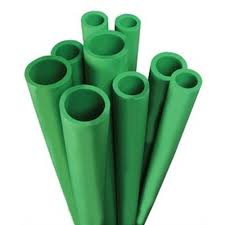Dec . 04, 2024 09:41 Back to list
Wholesale Solutions for PVC to HDPE Connections in Plumbing Applications
Understanding the Connection Between Wholesale PVC and HDPE
When discussing piping and plumbing materials, two of the most commonly mentioned options are Polyvinyl Chloride (PVC) and High-Density Polyethylene (HDPE). Both materials are widely used in various industrial and domestic applications, and their wholesale connections play a crucial role in ensuring seamless integration in projects. This article will explore the relationship between wholesale PVC and HDPE connections, focusing on their characteristics, benefits, and applications.
Characteristics of PVC and HDPE
PVC is a robust plastic material known for its durability, lightweight nature, and versatility. It is primarily used in plumbing, drainage, and construction applications. PVC pipes are widely recognized for their excellent resistance to chemicals, moisture, and corrosion, making them an ideal choice for water transportation and sewage systems. Additionally, PVC is a cost-effective option that comes in various sizes, making it a go-to solution for many contractors.
On the other hand, HDPE is a leading material in industries requiring high chemical resistance and flexibility. While it is also lightweight, HDPE boasts superior impact resistance and tensile strength compared to PVC. This flexibility gives HDPE an edge in applications where a more adaptable material is required, such as in trenchless construction methods. Due to its high-density composition, HDPE pipes can handle fluctuating temperatures and high-pressure situations, making them suitable for underground applications.
The Importance of Connection
Proper connections between PVC and HDPE are essential in many applications, especially in plumbing and drainage systems. While these two materials share some characteristics, their compatibility is not always straight-forward. Ensuring a reliable connection between them is crucial for maintaining system integrity and preventing leakages.
Transition Fittings
Wholesale connections between PVC and HDPE typically involve the use of transition fittings. These fittings allow for the safe and efficient joining of dissimilar materials. Available in various configurations, transition fittings are designed to accommodate the differences in size, shape, and chemical composition between PVC and HDPE.
For example, a common transition fitting would include a threaded end compatible with PVC and a socket end for HDPE. This design ensures a secure connection that can withstand pressure fluctuations and resist leaking. Additionally, the use of high-quality materials in the manufacturing of these fittings is vital for preventing failure in critical applications.
wholesale pvc to hdpe connection

Benefits of Wholesale Connections
Engaging in wholesale purchases of PVC and HDPE connections provides numerous advantages. Firstly, bulk purchasing can lead to significant cost savings. Wholesale suppliers often offer discounts for large orders, making it economically feasible for contractors and business owners to acquire the necessary materials without exceeding their budgets.
Secondly, wholesale distributors typically have a comprehensive inventory of transition fittings and other plumbing accessories. A one-stop shopping experience ensures that buyers can find the specific components they need to complete their projects seamlessly.
Lastly, a reliable wholesale supplier often provides expert guidance on the best practices for connecting PVC to HDPE. Their knowledge of the latest industry standards, installation techniques, and maintenance tips can help ensure that projects proceed smoothly and meet local regulations.
Applications Across Industries
The wholesale connection of PVC to HDPE is pertinent across various industries, including construction, agriculture, and municipal water systems. In construction, these materials are frequently used in drainage systems, where reliability and durability are crucial. In agriculture, HDPE is often employed for irrigation purposes due to its flexibility, while PVC pipes may be utilized for establishing secondary water lines.
Municipalities also benefit from the connection between these materials. The combination of PVC and HDPE allows for efficient water distribution and stormwater management systems capable of handling extensive networks of piping.
Conclusion
Understanding the wholesale connection between PVC and HDPE is essential for industry professionals focused on creating efficient, reliable, and sustainable infrastructure systems. By leveraging transition fittings and engaging with reputable suppliers, contractors can ensure that their installations meet quality and performance standards. As industries evolve and demand for innovative solutions increases, the collaboration between PVC and HDPE will likely remain integral to successful plumbing and piping projects.
-
High-Quality PVC Borehole Pipes Durable & Versatile Pipe Solutions
NewsJul.08,2025
-
High-Quality PVC Perforated Pipes for Efficient Drainage Leading Manufacturers & Factories
NewsJul.08,2025
-
High-Quality PVC Borehole Pipes Durable Pipe Solutions by Leading Manufacturer
NewsJul.08,2025
-
High-Quality PVC Borehole Pipes Reliable PVC Pipe Manufacturer Solutions
NewsJul.07,2025
-
High-Quality UPVC Drain Pipes Durable HDPE & Drain Pipe Solutions
NewsJul.07,2025
-
High-Quality Conduit Pipes & HDPE Conduit Fittings Manufacturer Reliable Factory Supply
NewsJul.06,2025

